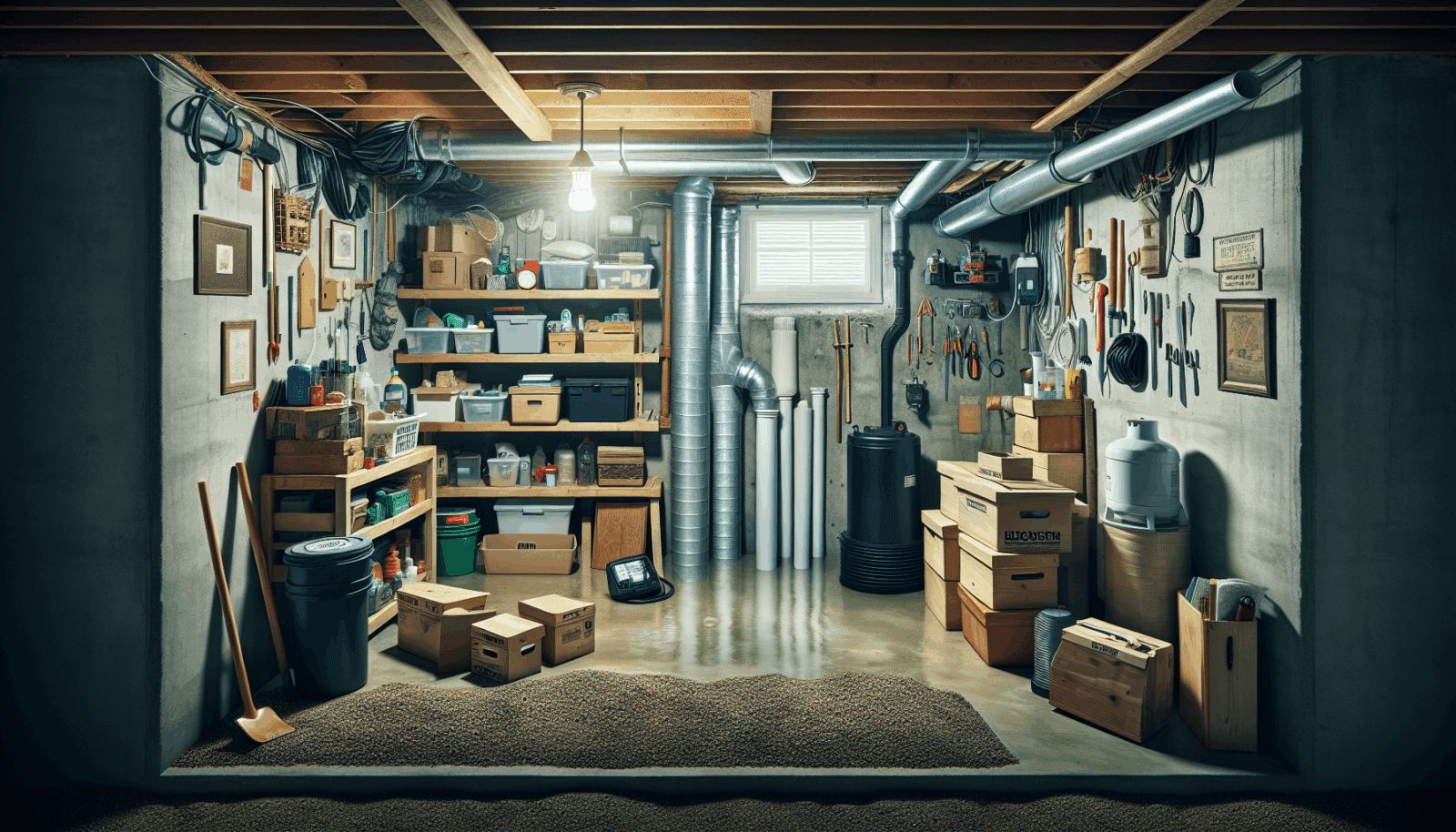At Utah Basement Finishing, we understand that a wet basement can be more than just a nuisance—it can pose significant risks to the integrity of your home and the health of your family. Whether you’re dealing with dampness or outright flooding, protecting your basement from moisture is crucial. In this article, we’ll share effective strategies to help homeowners safeguard their basements from water damage, ensuring that your home remains a safe and dry haven.
Contents
- 1 Understanding the Importance of Basement Waterproofing
- 2 Identifying Problem Areas in Your Basement
- 3 Types of Basement Waterproofing Methods
- 4 Benefits of Professional Waterproofing Services
- 5 Interior Waterproofing Techniques
- 6 Exterior Waterproofing Solutions
- 7 Essential Waterproofing Tools and Materials
- 8 Common Mistakes in DIY Basement Waterproofing
- 9 Maintaining Your Waterproofed Basement
- 10 Contact Us for Comprehensive Basement Waterproofing Solutions
Understanding the Importance of Basement Waterproofing
Basement waterproofing is not just about dealing with occasional wet spots; it’s a proactive approach to preserving your home’s foundation and preventing potential structural issues. A well-sealed basement can increase property value and provide peace of mind. By staying ahead of any possible water damage, you can avoid costly repairs and maintain a healthier living environment.
Moisture can sneak into your basement in various ways, including leaks, flooding, or condensation. Water damage can lead to mold growth, weakened walls, and even health issues due to poor air quality. Recognizing these threats is the first step towards taking preventive action. With effective waterproofing techniques, you can mitigate these risks and protect your investment.
Identifying Problem Areas in Your Basement
Before you start waterproofing your basement, it’s crucial to identify where water might be getting in. Often, homeowners might not realize how many potential entry points there are until it’s too late. Common problem areas include wall cracks, window wells, and floor joints.
Conducting a thorough inspection can save you a lot of trouble down the road. Look for signs of moisture like discoloration, efflorescence (a chalky white powder on walls), or musty odors, which can all indicate water intrusion. Often, these signs can help pinpoint the areas that need the most attention when waterproofing your basement.
Types of Basement Waterproofing Methods
When it comes to basement waterproofing, there are several methods to consider, each suitable for different situations. Choosing the right option depends on the specific challenges your basement faces, as well as your budget and preferences.
One popular method is interior waterproofing, which involves sealing the inside of your basement to prevent moisture from seeping in. Exterior waterproofing, on the other hand, is a more comprehensive approach that involves creating a barrier around your home to keep water out. There’s also the option of drainage systems, which help redirect water away from your foundation.
Benefits of Professional Waterproofing Services
While some DIY waterproofing methods can be effective, there are significant advantages to hiring professionals. Expertise and experience can make a world of difference when it comes to effective waterproofing solutions.
Professional waterproofers like Utah Basement Finishing have access to specialized tools and high-quality materials that might not be available to the average homeowner. Our team can quickly identify potential problem areas and implement the most effective solutions tailored to your home’s specific needs, ensuring a thorough and lasting waterproofing job.
Interior Waterproofing Techniques
Interior waterproofing typically focuses on managing moisture that has already entered your basement. It involves the application of sealants, coatings, or membranes to walls and floors to prevent moisture penetration.
This method is often less expensive and disruptive than exterior waterproofing because it doesn’t require excavation. However, it is best suited for basements with minimal water intrusion issues. We often recommend this approach for homes with minor leaks or as a supplementary method to exterior waterproofing for added protection.
Exterior Waterproofing Solutions
Exterior waterproofing is a more extensive process that involves excavating around your home’s foundation to apply a waterproof barrier. This method is one of the most effective ways to keep water out permanently.
By addressing the root cause of water entry, exterior waterproofing prevents moisture from reaching your basement walls altogether. This approach often involves installing drain systems or applying exterior membranes, ensuring a comprehensive defense against water intrusion.
Essential Waterproofing Tools and Materials
There are specific tools and materials that are essential for effective basement waterproofing. Here’s a handy list to get you started:
- French Drains: These are trench systems that help redirect water away from your foundation, preventing it from seeping into your basement.
- Sealants and Coatings: High-quality waterproof sealants can be applied to walls and floors to prevent moisture penetration.
- Sump Pumps: A reliable sump pump can help in directing water away from your home, especially during heavy rains.
- Membranes: These are used in exterior waterproofing and create a barrier around your home’s foundation.
- Crack Repair Kits: Used to fill in and seal cracks in your basement walls, preventing water from seeping through these entry points.
Common Mistakes in DIY Basement Waterproofing
While DIY projects can be fulfilling, there are common mistakes that homeowners make when attempting to waterproof their basements. These errors can lead to ineffective solutions and even exacerbate existing problems.
One major mistake is neglecting to address exterior drainage issues. No matter how well you seal your interiors, if water is pooling around your foundation, it will eventually find a way in. Another common misstep is using low-quality materials; investing in high-quality products can make a significant difference in the longevity and effectiveness of your waterproofing efforts.
Maintaining Your Waterproofed Basement
Once your basement is properly waterproofed, maintenance is key to ensuring its longevity and effectiveness. Regular inspections can help identify new problem areas before they become significant issues.
Keeping gutters clean and ensuring proper drainage around your home is vital. Seasonal inspections, especially before the rainy seasons, can prevent unexpected leaks. It’s also wise to monitor humidity levels in your basement and invest in dehumidifiers if necessary to maintain a dry environment.
Contact Us for Comprehensive Basement Waterproofing Solutions
Protecting your home from water damage is a critical step in maintaining its overall health and value. For professional and comprehensive basement waterproofing solutions, contact Utah Basement Finishing by phone at 801-515-3473 or Request a Free Quote today.




